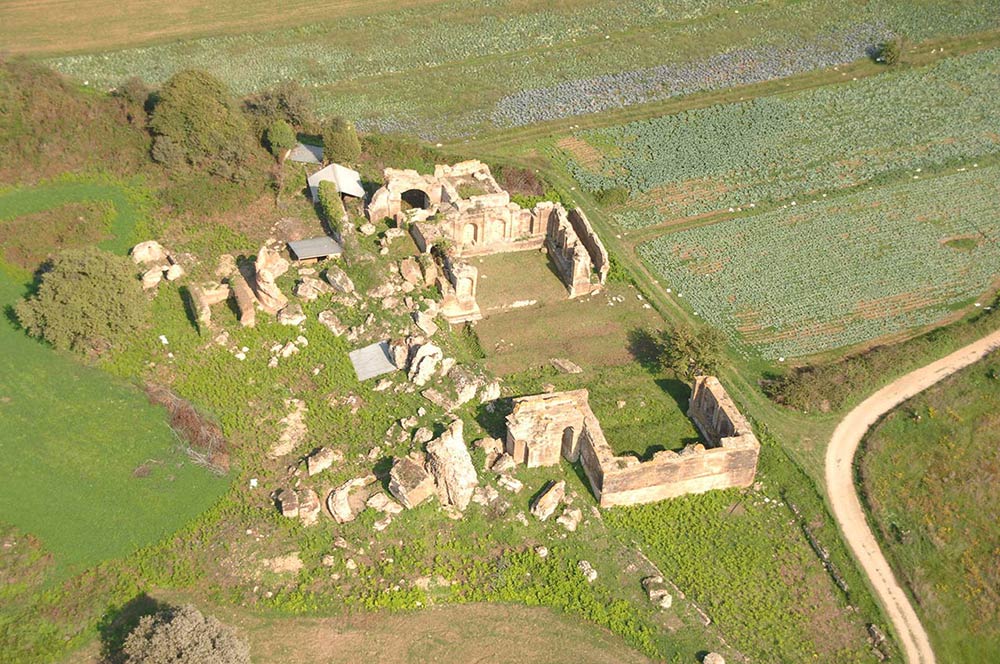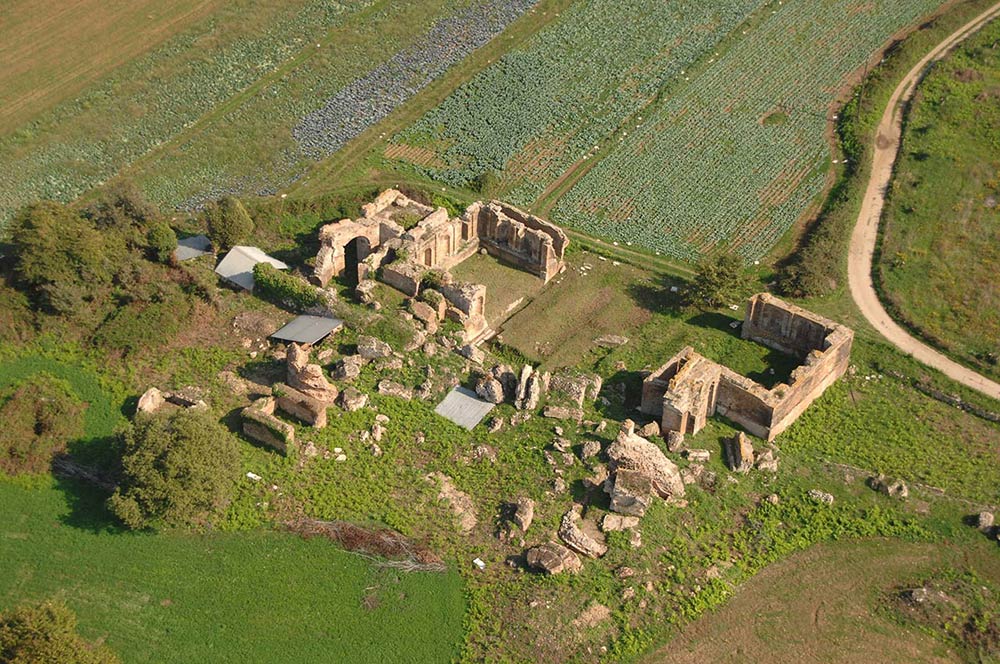-
In Agios Georgios there are springs of water from which, even today, Arta, Preveza and Lefkada are supplied. From this point starts the Roman Aqueduct with final destination the city of Nicopolis.
The water from the springs was concentrated in a large tank and then was pumped into the conduit. The conduit passed along a cliff and continued its course on two arcades.
The conduit had the form of a channel. The one side of the channel was carved into the rock and the other was built with bricks. The interior of the channel was covered with mortar.
The conduit passed on two arcades (the north and the south) crossing vertically the river Louros.
The north arcade has a length of about 140m. and a height of 14m. The south arcade has a length of 120m. and a height of up to 14m. Each arcade (north and south) has 14 piers.
-
After the springs of Agios Georgios a part of the Roman Aqueduct of Nicopolis is located in the area of Kokkinopilos. The conduit at Kokkinopilos had the form of a tunnel, which was carved into the natural rock. Its length was approximately 400m. In order to construct the tunnel the Romans used digging tools. Traces of these tools are visible today on the sides of the tunnel. Along the tunnel, shafts were opened, and through them someone could come down to the conduit and inspect its condition. The shafts were also used for venting the conduit.
-
Stefani is located in the middle of the overall route of the Roman Aqueduct of Nicopolis. In this site lies one of its best preserved part.
Today a retaining wall is visible.This wall supported the ground for the conduit to pass. It was built with bricks and filled inside with stones and mortar. The conduit in this site had the form of a channel, but it is not preserved.
-
At "Skala Louros" significant remains of the Roman Aqueduct of Nicopolis are preseved. Here the conduit had either the form of a channel, resting on a retaining wall or was carved into the natural rock.
Today we can see a small part of the conduit, with the retained vaulted roof.
-
In the region of Archangelos the conduit of the Roman Aqueduct of Nicopolis is located at great length. The conduit had the form of a channel following the course of the hill and then crossed the flatland up to an arcade.
Partly, the conduit was based on a retaining wall which slowly turned into an arcade because the ground was not smooth. In the flatland 13 piers are visible. Some of them were destroyed because of the construction of the "Preveza-Igoumenitsa" national road.
-
From the springs of Agios Georgios and having traversed a distance of about 50 km, the Roman Aqueduct of Nicopolis crossed the plain of Nicopolis onto an arcade and ended at the large complex of the Nymphaeum.
In Nymphaeum were the tanks of the city. Through them the water was channeled into the private houses and the public buildings (Baths, Theater, Odeum etc.) of the city.





















